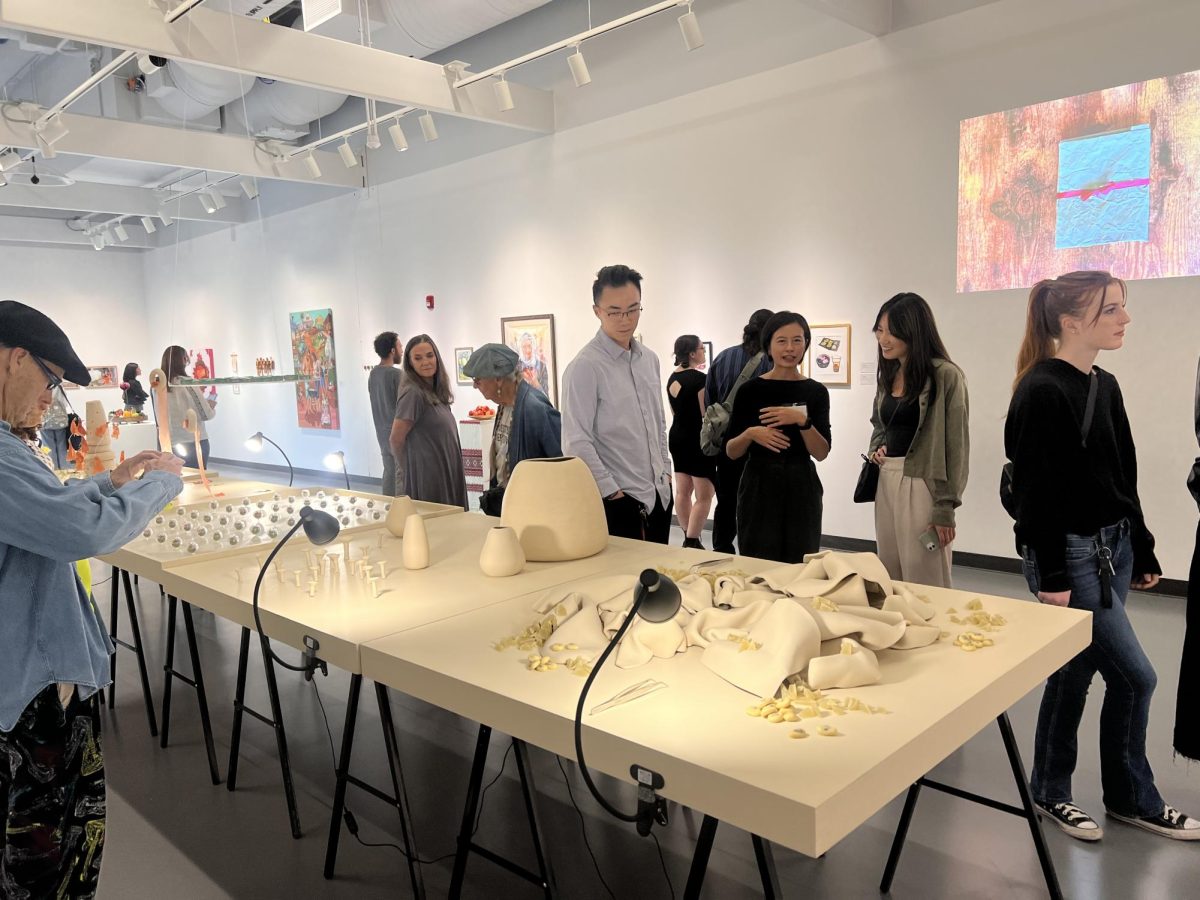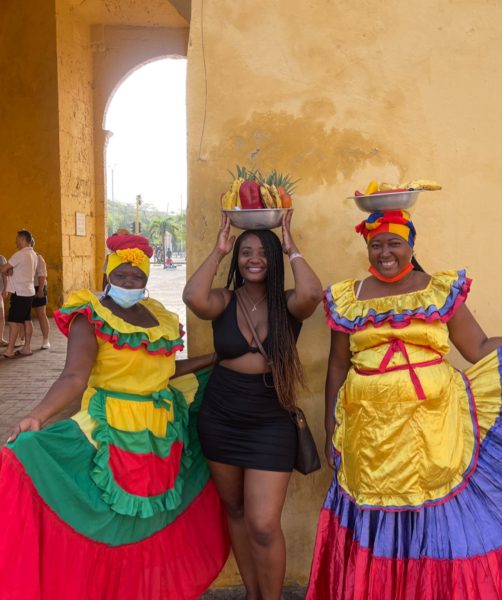Nov. 13 marked the launch of “Cosecha: An Exhibit About Food,” a month-long exhibition in Mesa’s art gallery (FA 103). Curated by 41 students from the Museum Studies program developed the skills they learned to build an art exhibition from the ground up.
The exhibit includes paintings, photos, glass pieces, stop motion animations, papier mâché, and interactive works. The Cosecha art exhibit is a multimedia show that expresses the relationship between food, art, and the self. The show displays a collection of materials and adaptations that reflect the exhibition’s title: cosecha, a Spanish word meaning “harvest.”
From determining the theme to creating the composition of the exhibit on its final day, the Museum Studies students are fully responsible for the production of the exhibit. The chance to display an art piece was open to everyone from the Mesa community through art submissions.
Students were also responsible for hanging the art and setting up the show at its inception. Gallery director and professor of Museum Studies Alessandra Moctezuma reflected on how beneficial the class would be for her students. “This class gives students all of the understanding of what it takes to put together an exhibition… the students also hang the show, write the press release, and learn all of the details [to create a show],” she said. “So, what they get out of it is at the end, they see how this exhibit is a sense of ownership and feeling like they were involved from the very beginning… this trains students for the art world, it’s good real-world training.”
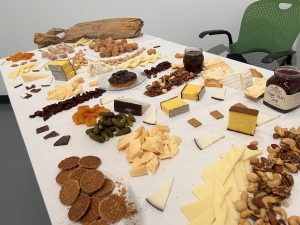
The opening reception was held on Nov. 16 and allowed the artists to showcase their interactive pieces. Artist and Japanese language major Hannah Rose Johansen took a deep dive into the psyche of someone like herself who struggles with binge eating, diabetes, and suffers from mental illness. Her contribution to the art show was a three-hour livestream titled “Ozempic and the Magic Mukbang.” Donning a metallic gold string bikini, Johansen forces the viewers to consider their relationship with food and whether they are happy with it, but with a major twist. Before her lay a table covered in food: cheese, pickles, donuts, cake, dried fruit, and much more. “I am basically going to go tenderly and start to eat slowly at first,” she said. “It’s an endurance piece. Over the next three hours, I’m going from slow, to voraciously devouring the food with my whole body.”
When asked what inspired this form of art, Johansen said, “I have diabetes, and I use Ozempic for weight loss, but it also suppresses my appetite,” she said. “I used to be a cheesemonger and a chocolatier, so I laid out all these desserts and delicious things that remind me of the past.”
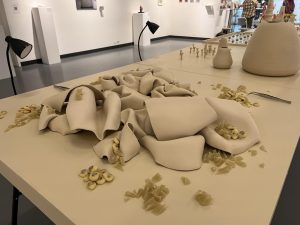
Maggie Shen, a community member accepted through the “call of art” request, provided her take on the impact of food and the partiality that may come along with it. Like Johansen, Shen wanted viewers to consider their relationship with food and their biases in food when traveling with her edible sculptures.
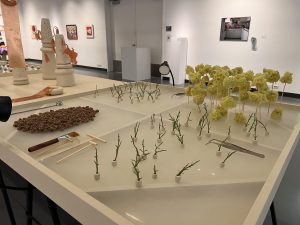
Five tables were set up in the middle of the gallery to demonstate her idea. “This is a project where food serves as a mindful agent. This draws information from the five climate zones of San Diego,” she said. “It’s the beach, coastal, inland, mountain and desert.
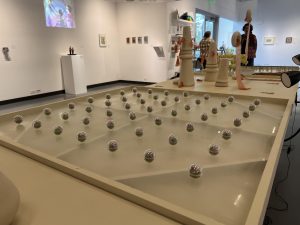
I take some of the elements from each climate zone as an inspiration. I made abstractional food, so people don’t know what they’re eating and that is the way of addressing the issue of bias to meet our preconceived ideas.” Attendees were able to challenge those preconceived notions by tasting the trees” and “mountains” of Shen’s piece attempting to figure out what they were eating.
A reception will be held on the last day of the exhibit, Dec. 14 from 5-7 p.m. This will allow viewers to experience the artist’s interactive pieces for one last time.
Link to artist profiles: Artist Profiles


